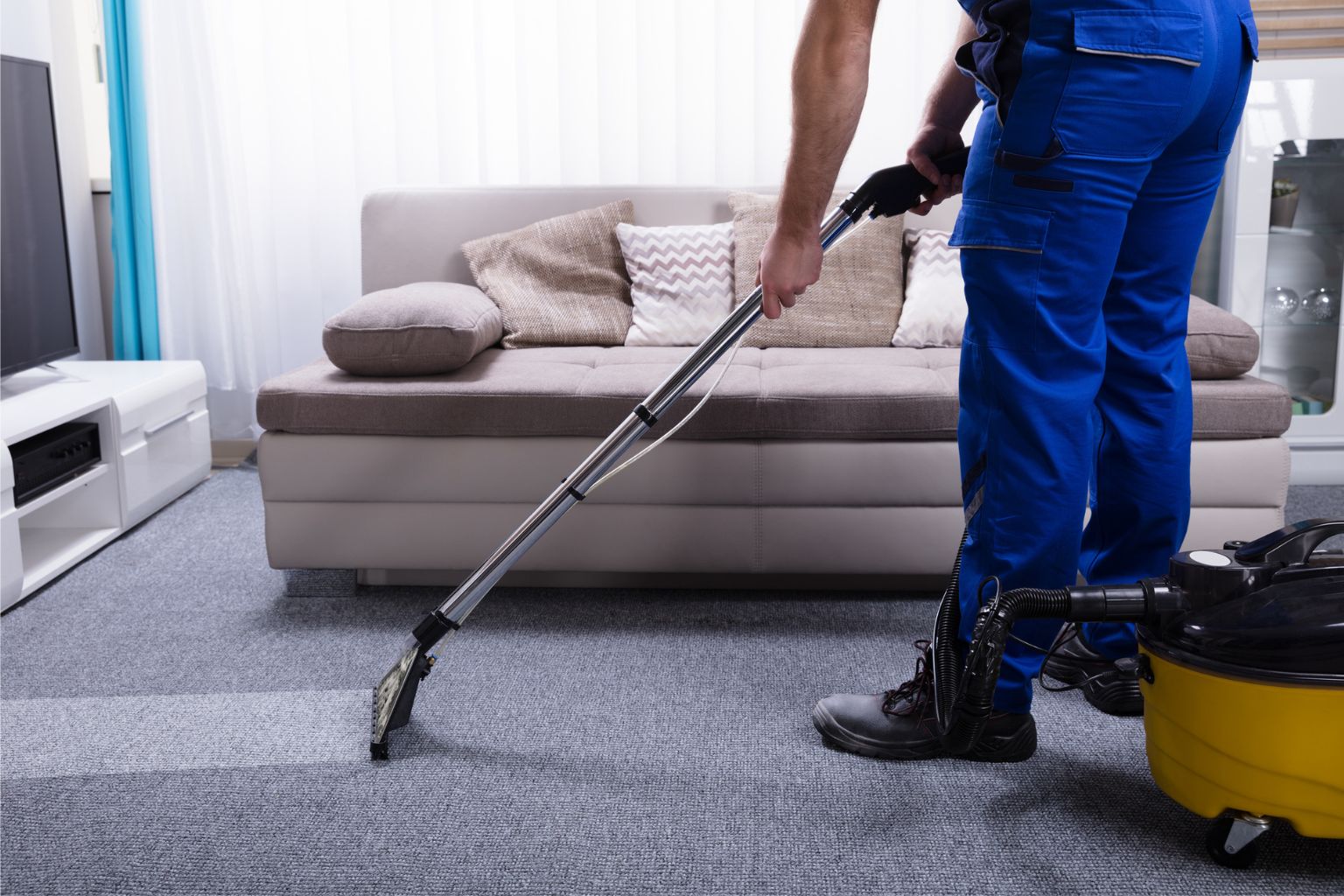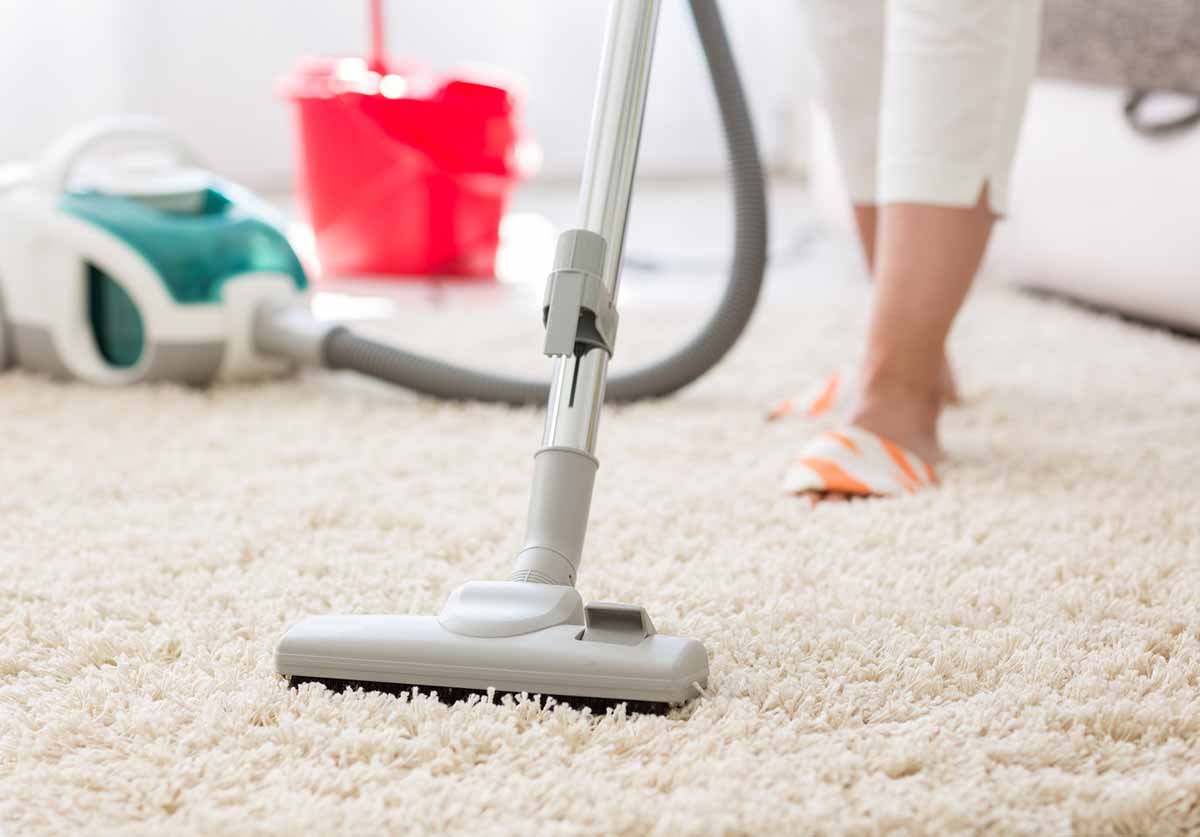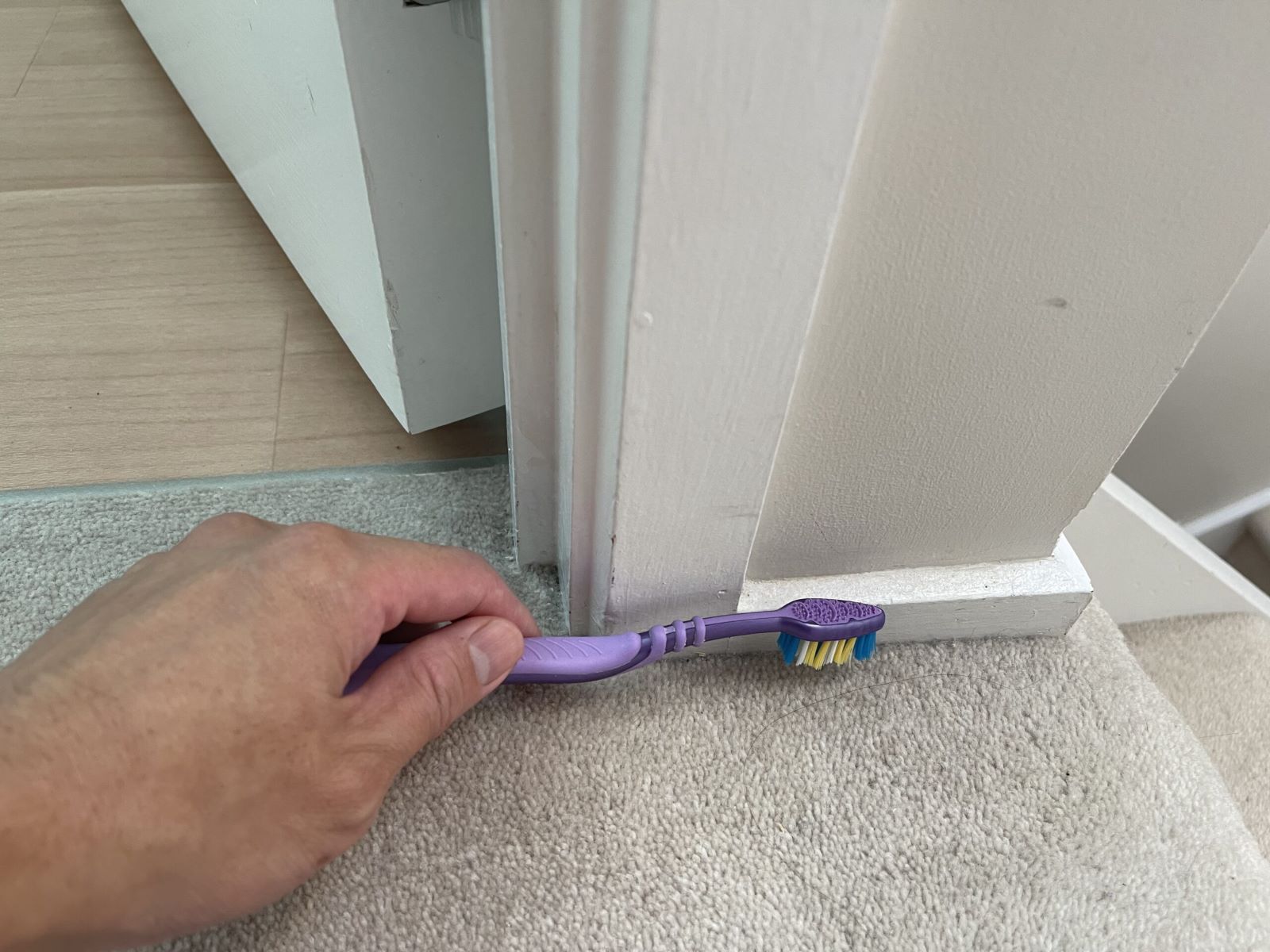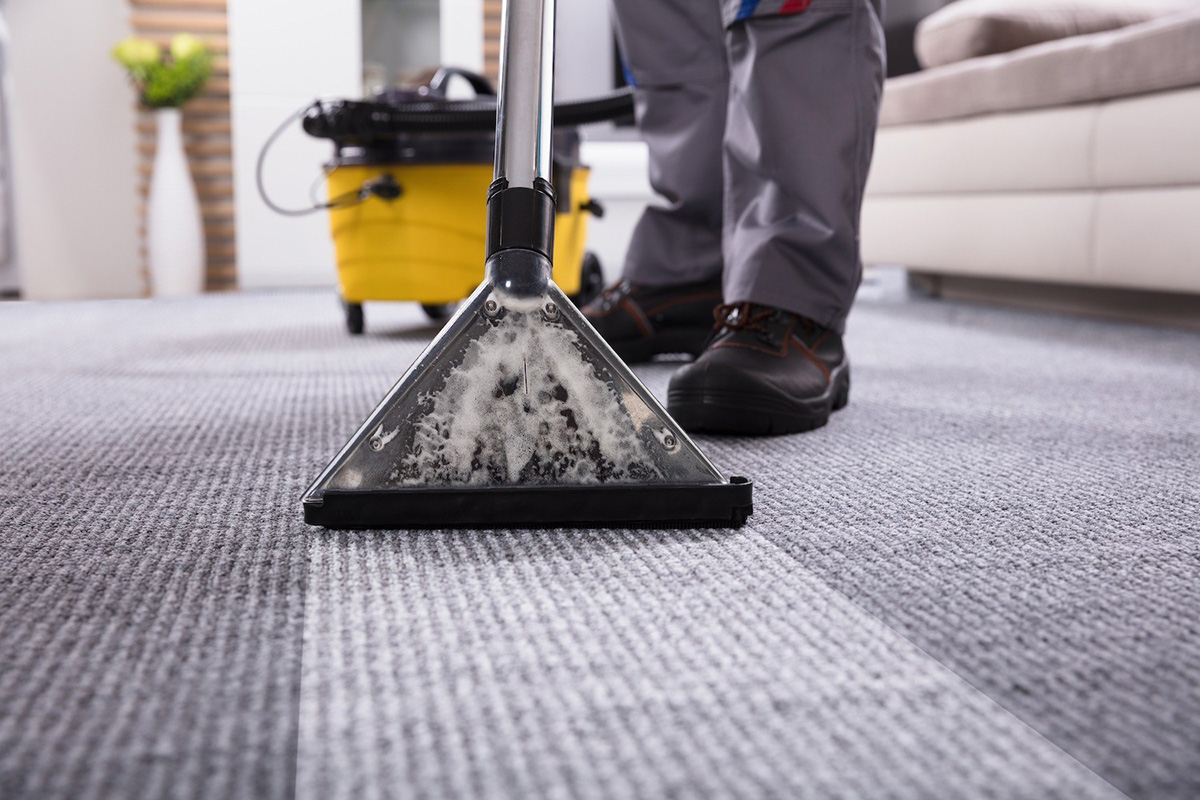

Articles
What Is The Best Carpet Cleaning Method
Modified: September 1, 2024
Discover the most effective carpet cleaning method with our informative articles. Keep your carpets fresh and clean with expert tips and advice.
(Many of the links in this article redirect to a specific reviewed product. Your purchase of these products through affiliate links helps to generate commission for Storables.com, at no extra cost. Learn more)
Introduction
When it comes to keeping your carpets clean and fresh, choosing the right carpet cleaning method is crucial. Regular cleaning not only improves the appearance of your carpets but also helps in maintaining a healthy indoor environment by eliminating dirt, dust, allergens, and bacteria.
With so many carpet cleaning methods available, it can be overwhelming to determine which one is the best for your carpets. Each method has its own advantages and limitations, and understanding the differences between them will help you make an informed decision.
In this article, we will explore some of the most common carpet cleaning methods and their benefits. Whether you have stubborn stains, high-traffic areas, or just want to give your carpet a deep clean, this guide will help you choose the best cleaning method for your specific needs.
Before we dive into the different methods, it’s important to note that professional carpet cleaning is recommended at least once a year to maintain the longevity and appearance of your carpets. However, regular maintenance and spot cleaning are also essential to keep your carpets looking their best.
Key Takeaways:
- Steam cleaning, or hot water extraction, is the best method for deep cleaning and sanitizing carpets, effectively removing dirt, stains, and allergens from deep within the fibers.
- Dry carpet cleaning offers a quick and convenient option for surface-level cleaning, making it ideal for carpets that cannot tolerate excessive moisture or require minimal drying times.
Read more: What Is Dry-Cleaning For A Carpet
Steam Cleaning
Steam cleaning, also known as hot water extraction, is one of the most popular and effective methods for deep cleaning carpets. It involves the use of hot water and a cleaning solution that is injected into the carpet fibers under high pressure.
Here’s how steam cleaning works:
- The cleaning solution is sprayed onto the carpet to loosen the dirt and stains.
- A powerful vacuum is then used to extract the solution, along with the dirt, debris, and allergens trapped in the carpet.
- The hot water and steam effectively kill bacteria, germs, and mites, leaving your carpets sanitized.
Steam cleaning has several advantages:
- Deep Cleaning: Steam cleaning reaches deep into the carpet fibers, removing dirt, stains, and allergens that are not visible to the naked eye. It is highly effective in removing tough stains and odors.
- Sanitization: The high temperature of the water and steam kills bacteria, mold, and dust mites, making steam cleaning an excellent choice for households with allergy sufferers.
- Environmental Friendliness: Steam cleaning does not require the use of harsh chemicals, making it safe for both your carpets and the environment.
- Versatility: Steam cleaning can be used on most types of carpets, including synthetic, wool, and even delicate materials. It can also be used on upholstery and rugs.
However, there are a few considerations to keep in mind:
- Drying Time: Steam cleaning involves the use of water, so it will take longer for your carpets to dry compared to dry cleaning methods. Proper ventilation and air circulation are recommended to speed up the drying process.
- Professional Equipment: While there are steam cleaners available for home use, professional-grade equipment will yield better results. It’s generally recommended to hire a professional carpet cleaner for optimal outcomes.
Overall, steam cleaning is an excellent choice for deep cleaning your carpets and maintaining a healthy indoor environment. It effectively removes dirt, stains, and allergens, leaving your carpets fresh and rejuvenated.
Dry Carpet Cleaning
Dry carpet cleaning, also known as dry extraction cleaning, is a method that uses minimal moisture to clean carpets. Instead of using water, dry cleaning relies on specialized cleaning compounds or powders that are spread onto the carpet.
Here’s how dry carpet cleaning works:
- The cleaning compound or powder is applied to the carpet using a machine with rotating brushes or by hand.
- The compound or powder absorbs dirt, stains, and debris from the carpet fibers.
- After a period of time, typically 15-30 minutes, the compound or powder is vacuumed up, taking the loosened dirt and stains with it.
Dry carpet cleaning offers several advantages:
- Quick Drying Time: Since dry cleaning does not involve the use of water, the carpets dry much faster compared to steam cleaning. This is beneficial for high-traffic areas or situations where minimal downtime is required.
- No Residue: The dry cleaning compounds or powders are designed to leave little to no residue behind, ensuring that your carpets stay clean for a longer period of time. This also helps in preventing re-soiling.
- Gentle on Delicate Carpets: Dry cleaning is a suitable option for delicate carpets that may shrink or get damaged when exposed to excessive moisture. It is a safer alternative for specialty rugs and materials.
However, there are a few considerations to keep in mind:
- Surface Cleaning: Dry cleaning is effective for surface-level cleaning and maintaining the appearance of your carpets. It may not be as effective in removing deep-seated dirt, tough stains, or odors compared to methods that use water and extraction.
- Pre-vacuuming: It is recommended to vacuum your carpets thoroughly before dry cleaning to remove loose dirt and debris. This will ensure better results and prevent the cleaning compounds from becoming saturated too quickly.
Dry carpet cleaning is a convenient and efficient method for regular maintenance and surface cleaning of carpets. It provides quick drying times and is gentle on delicate carpets, making it a popular choice for many homeowners.
Bonnet Cleaning
Bonnet cleaning, also known as absorbent pad cleaning, is a carpet cleaning method that involves the use of a rotary floor machine with a bonnet or absorbent pad attached to it. This method is commonly used for commercial carpet maintenance and is less commonly used in residential settings.
Here’s how bonnet cleaning works:
- A cleaning solution is sprayed onto the carpet to loosen dirt and stains.
- The rotary machine with the bonnet or absorbent pad spins rapidly, absorbing the dirt and debris from the carpet.
- As the bonnet becomes soiled, it is replaced or cleaned, allowing for continuous cleaning.
Bonnet cleaning offers several advantages:
- Quick Cleaning: Bonnet cleaning is a fast method for removing surface dirt and stains from carpets. It is often used in high-traffic areas where frequent cleaning is required.
- Dries Quickly: Since only a small amount of moisture is used in the cleaning process, the carpets dry quickly, minimizing the downtimes.
- Cost-Effective: Bonnet cleaning is a relatively affordable method compared to other carpet cleaning techniques, making it a viable option for budget-conscious individuals or businesses.
However, there are a few considerations to keep in mind:
- Surface Cleaning: Bonnet cleaning focuses on removing dirt and stains from the surface of the carpet. It may not be as effective in deep cleaning or removing stubborn stains, odor, or dirt that has densely settled deep within the carpet fibers.
- Potential Damage: The rotary motion of the bonnet can cause friction and potentially damage delicate carpet fibers or loop pile carpets. It’s important to assess the suitability of bonnet cleaning for your specific carpet type.
- Residual Chemicals: Since bonnet cleaning involves the use of cleaning solutions, there may be a possibility of residue remaining on the carpet. It’s important to thoroughly rinse or extract any remaining chemicals to avoid potential build-up.
Bonnet cleaning is a quick and cost-effective method for surface cleaning and maintenance of commercial carpets. However, it may not be suitable for deep cleaning or removing stubborn stains. It’s essential to consider the specific needs and requirements of your carpets before deciding on this method.
Steam cleaning is often considered the best carpet cleaning method as it effectively removes dirt, stains, and allergens without leaving behind residue. It’s also safe for most carpet types.
Shampooing
Shampooing is a traditional carpet cleaning method that involves the application of a cleaning detergent or shampoo to the carpet, followed by agitating the solution into the fibers using a rotary brush or machine.
Here’s how shampooing works:
- A carpet shampoo or cleaning detergent is mixed with water to create a cleaning solution.
- The solution is then applied to the carpet using a specialized shampooing machine or by hand.
- A rotary brush or machine is used to agitate the solution into the carpet fibers, loosening dirt, stains, and debris.
- After allowing the solution to penetrate the carpet for a period of time, the carpet is thoroughly rinsed and extracted using a wet vacuum or extraction machine.
Shampooing offers several advantages:
- Effective Cleaning: Shampooing provides deep cleaning, removing dirt, stains, and odors that have settled deep within the carpet fibers. It can help revive heavily soiled carpets and restore their appearance.
- Stain Removal: The combination of the cleaning solution and agitation can effectively break down and remove stubborn stains and spots from the carpet.
- Pleasant Fragrance: Many carpet shampoos are formulated with pleasant scents, leaving your carpets smelling fresh and clean after the cleaning process.
However, there are a few considerations to keep in mind:
- Drying Time: Shampooing involves the use of water and can result in longer drying times compared to dry cleaning methods. Adequate ventilation and air circulation are essential to speed up the drying process.
- Residue: If not properly rinsed or extracted, shampoo residue can be left behind on the carpet, attracting dirt and potentially causing re-soiling. Thorough rinsing and extraction are necessary to prevent this issue.
- Shampoo Build-Up: Over time, repeated shampooing can create a build-up of detergent residue in the carpet fibers. This can lead to a sticky or stiff feel and may require more frequent professional deep cleaning to remove.
Shampooing is a robust method for deep cleaning and stain removal from carpets. It can be particularly useful for heavily soiled or stained carpets. However, careful rinsing and adequate drying are necessary to avoid residue or build-up.
Read more: What Is Steam Cleaning For A Carpet
Encapsulation Cleaning
Encapsulation cleaning, also known as crystallization cleaning, is a carpet cleaning method that utilizes encapsulating compounds to remove dirt and stains from the carpet fibers. This method has gained popularity in recent years due to its effectiveness in both commercial and residential carpet cleaning.
Here’s how encapsulation cleaning works:
- An encapsulating cleaning solution is sprayed onto the carpet. The solution contains polymers that encapsulate or surround the dirt and stains, forming small crystals.
- As the solution dries, the encapsulated dirt and stains become brittle.
- The brittle crystals can then be easily removed by vacuuming, leaving the carpet clean.
Encapsulation cleaning offers several advantages:
- Efficient Cleaning: The encapsulating compounds effectively trap and encapsulate dirt, stains, and debris, making their removal easier during the vacuuming process.
- Quick Drying: Since encapsulation involves minimal moisture, the carpets dry rapidly, allowing for minimal downtime. This makes it an ideal option for high-traffic areas or situations where immediate use of the area is desired.
- No Residue: Encapsulation cleaning solutions are designed to leave behind a residue-free carpet. This helps prevent rapid re-soiling since there is no sticky residue left to attract dirt and debris.
- Extend Carpet Life: As encapsulation cleaning removes dirt and debris, it helps prolong the life of the carpet by reducing fiber abrasion and wear caused by trapped particles.
However, there are a few considerations to keep in mind:
- Surface Cleaning: Encapsulation cleaning is effective for regular maintenance cleaning and removing surface-level dirt and stains. It may not be as effective for deep-seated dirt or stains that have penetrated deep into the carpet fibers.
- Pre-vacuuming: It is recommended to vacuum the carpet thoroughly before encapsulation cleaning to remove loose dirt and debris. This improves the overall effectiveness of the process and ensures better results.
- Carpet Condition: Encapsulation cleaning is suitable for most carpet types, but it’s important to consider the condition and manufacturer’s recommendations for your specific carpet before utilizing this method.
Encapsulation cleaning is a fast and efficient method for regular maintenance cleaning and keeping your carpets looking fresh. It offers quick drying times and leaves behind no residue, making it a popular choice among both residential and commercial carpet cleaning professionals.
Conclusion
Choosing the best carpet cleaning method for your carpets is essential to maintain their appearance, longevity, and overall cleanliness. Each method discussed in this article has its own advantages and considerations to keep in mind.
Steam cleaning, also known as hot water extraction, offers deep cleaning and sanitization benefits. It effectively removes dirt, stains, and allergens from deep within the carpet fibers, making it a popular choice for a thorough clean.
Dry carpet cleaning, on the other hand, provides a quick and convenient option for surface-level cleaning and maintenance. It is ideal for carpets that cannot tolerate excessive moisture or require minimal drying times.
Bonnet cleaning is a fast and cost-effective method commonly used for commercial carpet maintenance. It focuses on surface cleaning and can be beneficial for high-traffic areas that require frequent cleaning.
Shampooing is a traditional carpet cleaning method that provides deep cleaning and stain removal. It is effective for reviving heavily soiled carpets, but proper rinsing is important to prevent residue build-up.
Encapsulation cleaning offers an efficient and quick-drying solution for regular maintenance cleaning. It utilizes encapsulating compounds to trap and remove dirt and stains, leaving behind a residue-free carpet.
Ultimately, the best carpet cleaning method depends on your specific needs, the condition of your carpets, and the desired results. Regular carpet maintenance is important, and professional deep cleaning at least once a year is recommended to maintain the health and appearance of your carpets.
Remember to consider factors such as carpet type, carpet condition, drying time, and the presence of stubborn stains or odors when choosing a carpet cleaning method. By selecting the most appropriate method, you can keep your carpets clean, fresh, and looking their best for years to come.
Frequently Asked Questions about What Is The Best Carpet Cleaning Method
Was this page helpful?
At Storables.com, we guarantee accurate and reliable information. Our content, validated by Expert Board Contributors, is crafted following stringent Editorial Policies. We're committed to providing you with well-researched, expert-backed insights for all your informational needs.














